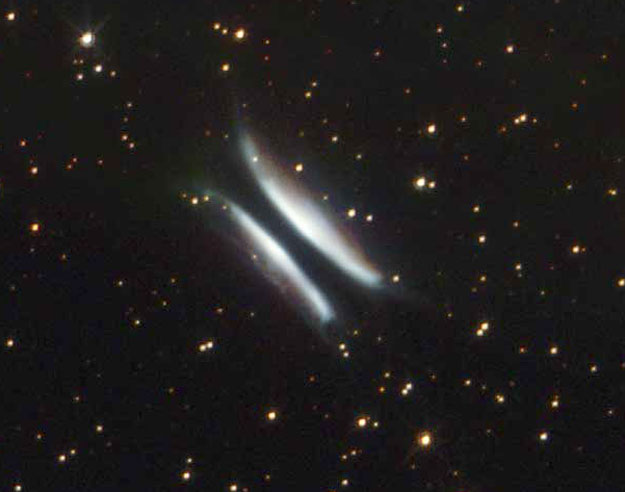

What at first might look like two galaxies preparing for an intergalactic belly flop is actually a single objects whose classification is in dispute. The objects is nicknamed Gomez’s Hamburger for its resemblance to the awesome food and more formally called IRAS 18059-3211.
Originally, Gomez’s Hamburger was thought to be a planetary nebula with an estimated distance of 6500 light-years. When a sun-like star reaches the end of its life, it throws off its outer layers creating some rather intricate structures in the process. These objects are very short lived as the star dies and dims to the point where it is no longer able to sustain the nebula’s vibrant color. Short lived, in this case, means a few ten thousand or hundred thousand years; thus far, we’ve only discovered a few hundred of these nebulae.
More recent analysis, however, suggests the object is a protoplanetary disk and lies at a distance of 900 light-years. A protoplanetary disk is a dense disk of gas and dust that surrounds new stars. Some objects, such as HH-30 resemble Gomez’s Hamburger with greater visible accuracy that other types of objects.
We have a dying star on one hand and a newborn star on the other. Much of the confusion is caused because astronomers can’t see inside the thick dark band in between the “hamburger buns.” If we could, we’d quickly see if the star was dying, throwing off layers in one last hurrah or if the object is a new star with brand new planets and the possibility of life arriving on those planets blinking as it steps into the sun… wait… that Lion King.